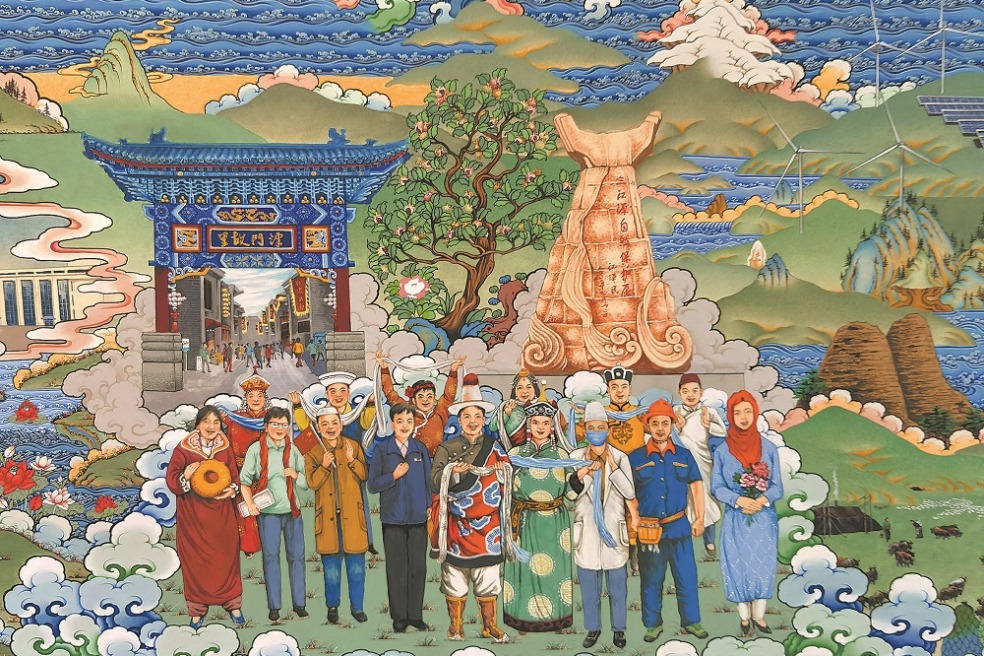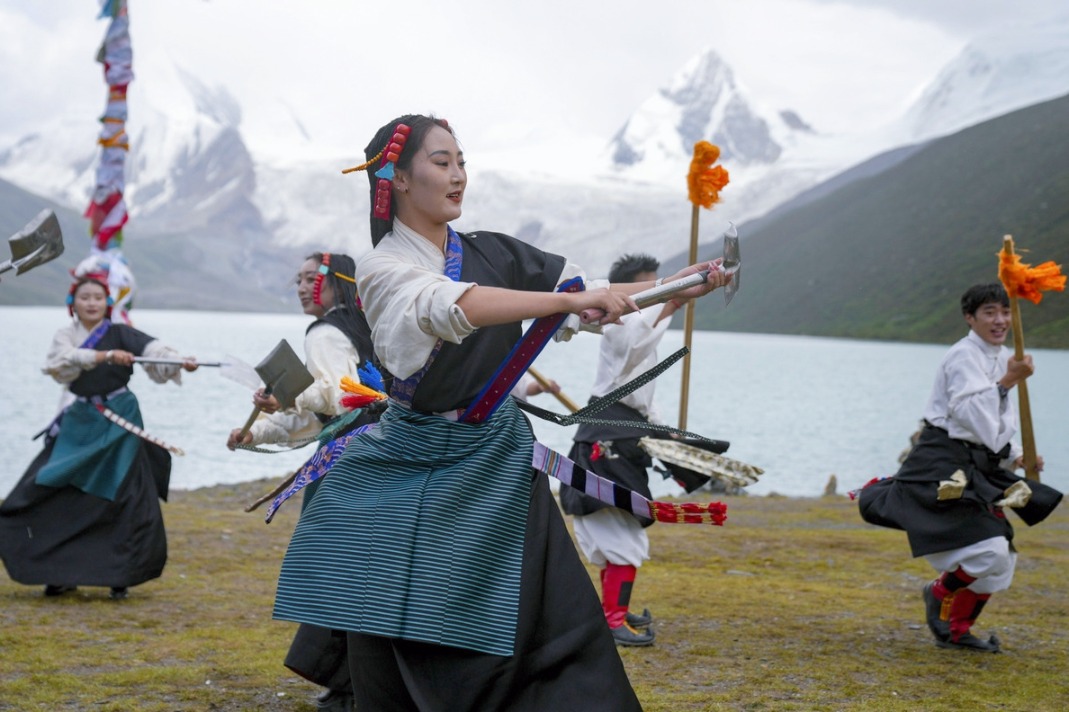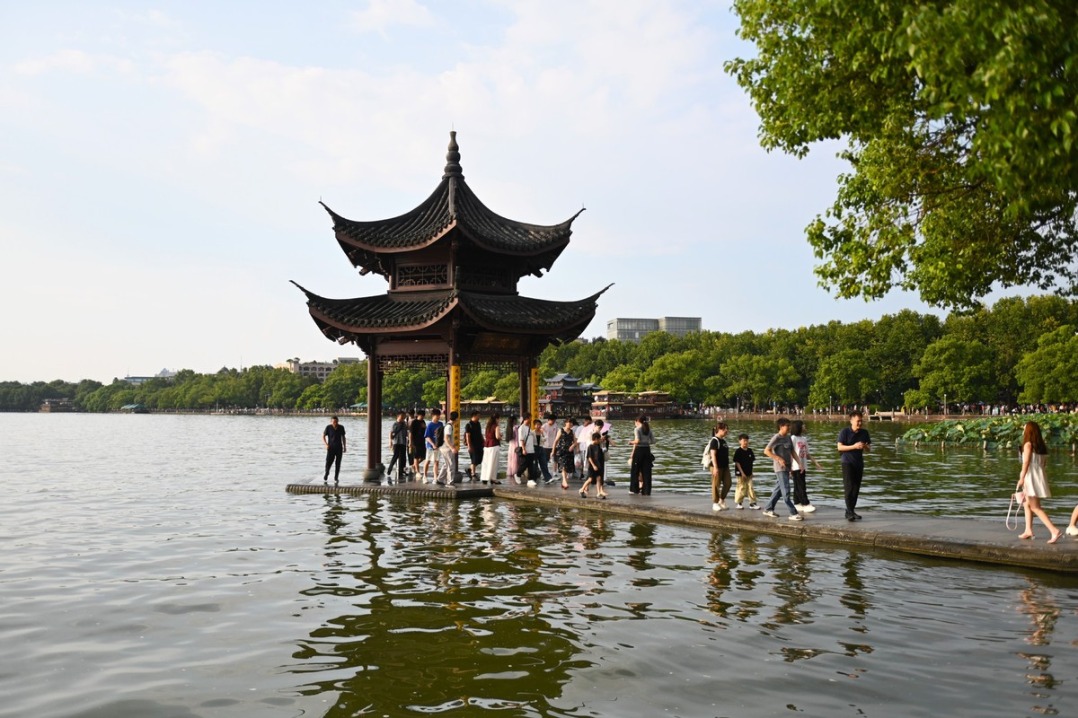Qinghai rides carpets, culture to new prosperity
From Thangka paintings to quality rugs, province is leveraging its heritage, history


Wedding legacy
"Every young girl in the Tu ethnic group knows how to do Pan embroidery. Only by doing so can she make her wedding costume by hand when she gets married," said Zhang Zhuoma Shijie, as she explained the cultural inheritance of Pan embroidery skills.
"I started learning when I was 14 or 15 years old and made my own wedding costume when I was 19," said the 58-year-old inheritor of the intangible cultural heritage of Pan embroidery.
Zhang is also the director of the Pan Embroidery Garden in Banyan village, Huzhu Tu autonomous county in Haidong. The Tu people worship the sun and rainbows, and the county is known as the "Hometown of Rainbows". Their costumes are characterized by colorful sleeves and Pan embroidery.
Pan embroidery uses two threads — one coiling, one stitching — made without a frame and relying solely on hand movements, a technique impossible to replicate by machine. Founded in 2017, the Pan Embroidery Garden employs over a dozen senior embroiderers aged 63 to 73, each earning over 10,000 yuan annually.
Known for its bright colors, the classic pattern of Pan embroidery resembles sunflowers (though it is not a literal sunflower), symbolizing a peaceful, auspicious, happy and beautiful life.
Today, Pan embroidery adorns scarves, laptop bags, pillows, coasters and other fashion products. It is sold domestically and abroad through the Qing embroidery — or embroidery of Qinghai — workshop network.
The Pan method comes under the umbrella of Qing embroidery, which encompasses 17 categories and 29 stitching techniques, including Tibetan embroidery, and pile embroidery in Huangzhong district of Xining.
It originated during the Qin and Han dynasties (221 BC-AD 220) along the southern route of the Silk Road and integrates elements from the Central Plains and plateau culture.
The Qing embroidery workshop network consolidates experience, displays, training, production, and sales, and serves as a vital platform for preserving ethnic embroidery, boosting employment, and linking heritage protection with rural vitalization.
























